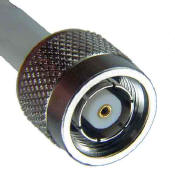Cables
Microwave signals need the right cable. Two types of cable are
generally well suited: LMR195 (c. 4 mm diameter) cable and LMR400
(1 cm)
cable. The LMR400 cable (above) has about 1/5 the rate of
dB loss per meter and makes it attractive for low signal situations,
but it is Very Stiff, even the flex types, with a bend radius of about
12mm. It's a tradeoff between the big stiff cable and the signal
quality-so if you can get away with it, the LMR195 cable (below)
is lighter,
cheaper and more flexible. The
cable choices between LMR195 (c. 4 mm diameter) cable and LMR400 (1 cm)
cable
may also affect the mount design, as discussed above.
Antenna with LMR195 cable.
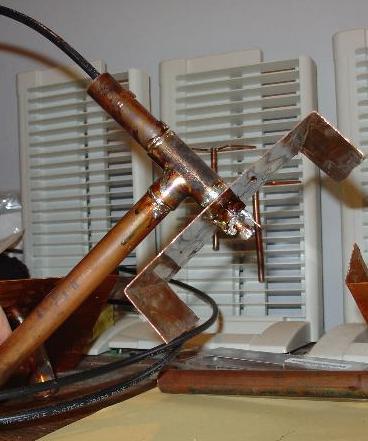
Cell phone & "Pigtail" cable.
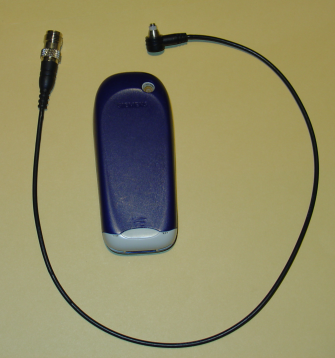
You need to get the "pigtail" for your make of phone. Many cell
phones do not have antenna jacks. Not all plugs on the back of a
cell phone are antenna jacks. You may find what you need here.
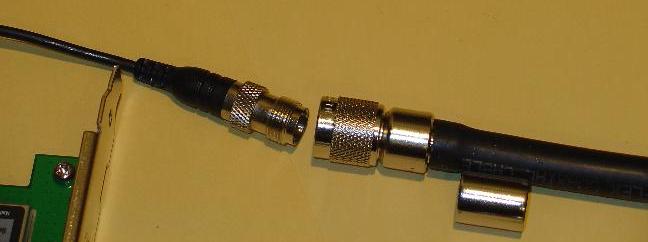
Making the antenna cable is a little exacting, but not really very
hard. The hardest part is ascertaining the precise cable
end to buy. Study up on that part, and be sure of what you need
before you buy any cable parts-they are expensive. The basic
tradeoffs in cable are line loss, clunkiness, and cost.
It's hard to use the LMR400 (above/below) as a phone wire, but in very
low signal
areas, it may be the best option. I use LMR400 for the long run,
and a short piece of LMR195 for the "phone cord" from the pigtail to
the wall.
Two types of microwave coax cable connectors are shown here- the common
LMR-400 TNC Male (above right) that
connects to the telephone 'pigtail' that mates to a specific make of
phone (top left). The example below is an LMR-400 R-SMA
male (center). The wifi card shown here comes with the R-SMA
female connector. The Coax cable to the lower right is LMR-400
Ultraflex.
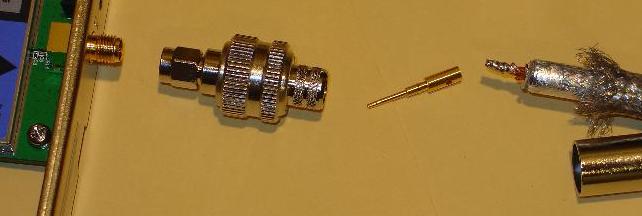
If you look carefully at the LMR-400 cable above (right), you'll see
that the center
connector has been tinned. The flex cable has a stranded
center: I had to clip three of the seven wires (Not the Center
Wire!) and tin the lot to make a good fit in the crimp connector.
The LMR400 R-SMA connector was designed for the solid core wire-I'll be
more careful with my order next time.
I bought cable and connectors from
these guys: I find them Pretty Good-they are prompt and
courteous, and will sell in small quantities.
cable construction
pdf
A closeup of a Linksys WRT54GS Access Point antenna connector
(R-TNC female). There are two R-TNC female antenna connectors on
the access point, for diversity.
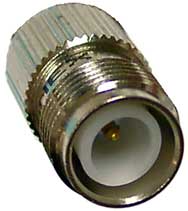
A closeup of the R-TNC (M) cable connector that will
attach to the Linksys WRT54GS device. I use LMR195 cable to
connect the AP to the BiQuad.
